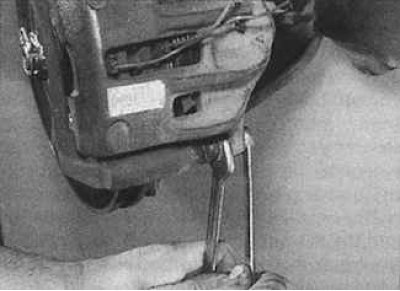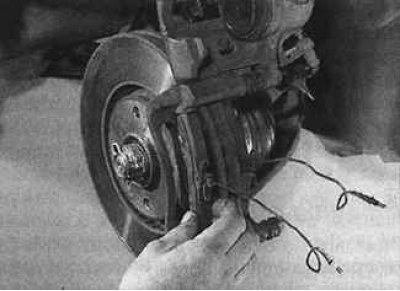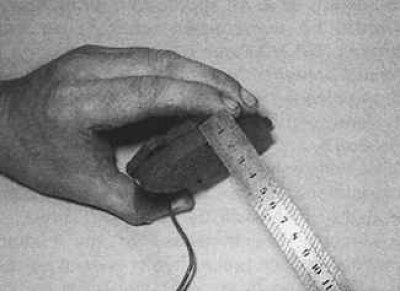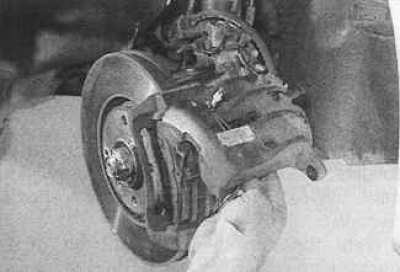Attention! Be sure to replace all the pads on one axle of the car, even if one pad has reached the wear limit. If the pads are to be reinstalled, they must be marked before removal.
Warning! Brake pads generate brake dust, which contains asbestos, which is harmful to health. Therefore, when cleaning brake pads, do not use compressed air or inhale dust.
1. Raise the front of the car and secure it on stands. Remove the front wheels.

2. Disconnect the electrical connector located on the wire going to the brake pad wear sensor.
3. Push the piston into the caliper by moving the caliper in the direction opposite to the piston.

4. Remove the lower guide pin bolt. At the same time, use a thin wrench to keep the guide pin from turning. Use only a new bolt to secure the guide pin.

5. Pivot the caliper up on the top guide pin and tie it to the upright with soft wire.

6. Remove the two brake pads from the caliper holder.

7. Measure the lining thickness of each brake pad.
8. If the condition of the brake pads allows their further use, clean them using a clean wire brush and rags.

9. Before installing the pads, check that the guide pins move freely in the caliper holder and make sure that the guide pin rubber boots are not damaged.
10. Clean dust and dirt from the caliper and piston. Check the condition of the dust seal around the piston.
11. If new brake pads will be installed, press the piston into the caliper. This can be done with a wooden rod or a hammer handle. In this case, especially make sure that the piston is not warped and that the surfaces of the piston and boot are not damaged. When the piston is pushed in, the brake fluid is forced out of the brake cylinder into the expansion tank. Therefore, constantly monitor the fluid level in the tank and, if necessary, pump it out. When installing old brake pads, put them in their original places.
12. Insert the outer and inner brake pads into the caliper holder.

13. Lower the caliper onto the brake pads by passing the wire from the brake pad wear sensor through the window in the caliper. Lubricate the threads of the guide pin mounting bolt with an anti-threading agent (Peugeot recommends Loctite Frenetanch).

14. Push the caliper into position, then screw in the guide pin mounting bolt to the correct torque.
15. Connect the brake pad wear sensor electrical connector.
16. Check the brake fluid level in the reservoir. It must not exceed the mark "max". Depress the brake pedal several times to press the pads against the disc and recheck the brake fluid level in the reservoir.
17. Perform the above steps on the second front wheel.
18. Install wheels and lower vehicle.
19. Recheck the brake fluid level.
